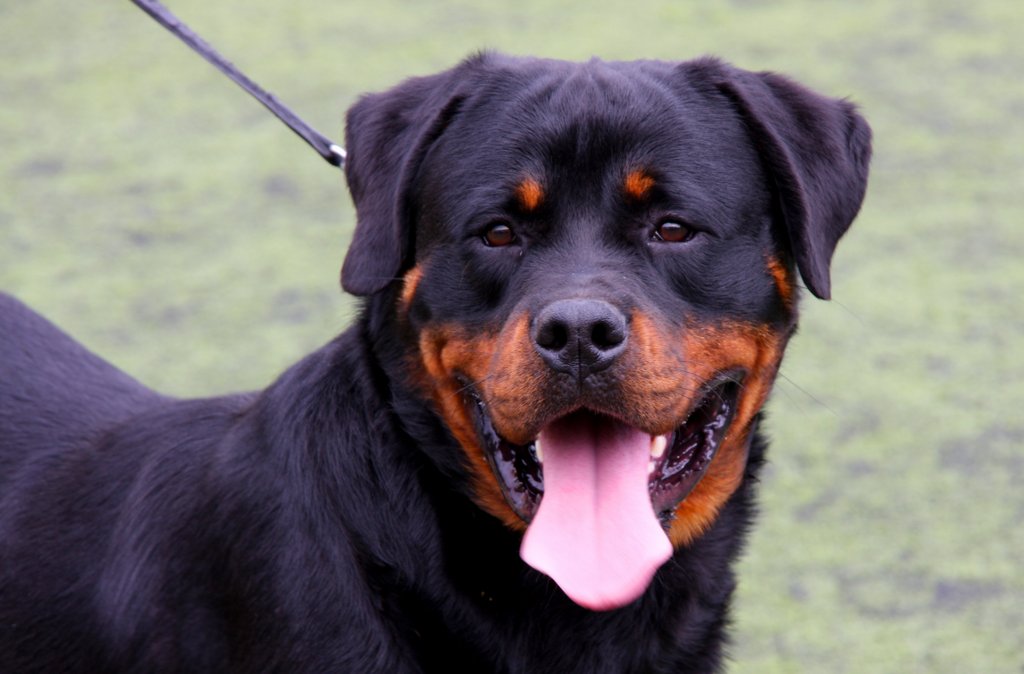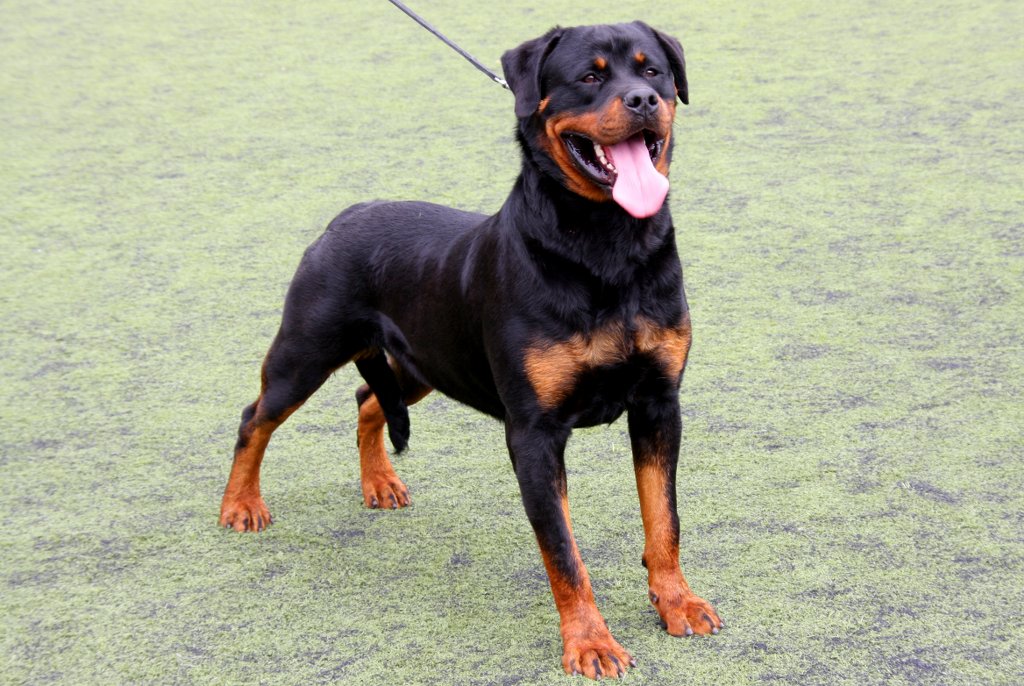Rotweilers, sometimes called the Rottie, the Rotweiler Metzerhund, the Rottweil Dog, the Rott and the Butcher’s Dog, is an intelligent dog with a strong instinct for guarding. These stocky dogs are known for their intelligence and dependability, but unfortunately, they now have a reputation as being dangerous due to owners and breeders who failed to socialize and raise dogs properly. When bred and raised correctly, they are calm, kind, loveable dogs that make great pets, even for families with children. They have become popular within American, not only as a pet, but as guide dogs, police dogs, therapy dogs and more.
Origin
Although the exact origins of the Rottweiler is unknown, this breed is believed to descent from Roman drover dogs that were used for moving livestock hundreds of years ago. As the Romans worked to conquer Europe, they required vast armies. To feed those armies, they needed huge flocks and herds and the Roman drover dogs were used to manage flocks and herds while guarding the stock and the soldiers during the night.
At some point around 700 A.D., a Christian church was built on what had previously been a site for Roman baths in Germany, during this build, they found red tiles from some Roman villas and they named this site “das Rote Wil,” which literally meant, “the red tile.” Today the site is called the “rottweil,” and during the 1th century, it became a hub for commerce and many butchers and cattleman moved to settle in the area. They required dogs to help them on the job, so the Roman drover dogs, as well as their descendants, worked in this area from the 12th century through the 19th century. At this point, they were given the name Rottweiler Metzgerhund.
For a long time, the breed was not heard of, since the railroad reduce the need for these dogs. It wasn’t until 1901 that a Leonberger and Rottweiler club was started and this club came up with the Rottie’s written standard, which address temperament and physical characteristics. During World War 1, the German Army used the breed, and after the war, multiple breed clubs were founded within Germany. Finally, the Allgemeiner Deutscher Rottweiler Klub was started in 1921, and the club published a studbook that is still active today.
The AKC didn’t admit Rottweilers to their Stud Book until 1931. The breed standard would be approved by the AKC in 1935, although it wasn’t until 1948 that the first Rottweiler would earn a conformation championship title from the AKC. Since 1966, the English Kennel Club has recognized the Rottweiler breed.
Appearance
The Rottweiler is muscular, athletic and powerful and has a broad, large head. They have a level topline and are just a bit longer than they are tall. Rottie’s boast black, wide noses, triangular, pendant ears and black lips. Even the inside of their mouth is black. The teeth have a scissor bite and the eyes are dark brown, almond shaped and deep set. Generally, the tail is docked.
Rotweilers have a beautiful, black, short coat that has markings that are clearly defined on the lower legs, cheeks, under their tail, lower legs and over the eyes. Their double coat is coarse and straight and the thickness of their undercoat depends upon the climate where the dog lives. Usually, the top coat is of medium length and tends to be shorter around the legs, ears and head. While the breed always has a black coat, the markings may vary in color from a rust or mahogany.
Full grown males usually are between 14-17 inches tall and weigh around 115 pounds. Full grown females are a bit shorter, standing at 22-25 inches tall and weighing in at about 100 pounds.
Temperament
The Rottweiler has a loyal personality, which makes this breed an excellent watchdog. When they are trained properly, they are dignified and even tempered. With their owners, they are usually playful and affectionate and they like to cuddle, even though they are so large. Once you make friends with a Rottie, you’ll have a friend for life. While well-bred, well-trained Rotweilers are wonderful dogs, some Rotties are born with bloodlines that are unstable if they are bred indiscriminately. Avoid any breeder that claims that these dogs should be aggressive.
Rotties may prove difficult to train, especially for a new dog owner. They often assume that they are in charge and show dominance, so it is important that boundaries and rules are set and enforced. Firmness and confidence is needed when training these dogs, but harshness should not be used. It’s important to start training early before bad habits begin to develop.
Grooming
In most cases, Rotties don’t require a lot of grooming. Simply brushing their coat each week is enough to eliminate loose hair while distributing the skin’s natural oils, which keeps the coat looking healthy and shiny. A Rottweiler sheds heavily a couple times each year, and during this shedding period, they may need to have their coats brushed several times a week. Since their natural oils are important to their skin and coat health, they should only be bathed when needed.
Working Roles
The Rottweiler is known to have a natural style for gathering and they like to be in control, which is why they are sometimes used for herding purposes. They have been proven helpful when trying to move stubborn stock that may ignore other herding dogs.
Health
On average, Rottweilers will live between 10-12 years. The breed is relatively healthy, but since they are a large breed of dog, hip dysplasia may prove problematic. Another common problem among Rotties is Osteochonritis dissecans, which may occur because they grow so rapidly. Quality breeders should have elbows and hips of breeding stock x-rayed and a specialist, to rule out these problems, should read the x-rays. Unfortunately, the Rottweiler happens to be prone to developing cancer, which is one of the most common reasons that these dogs die early. If they do not get enough exercise, or they are overfed, they are also prone to become obese. Obesity in this breed may result in other problems, such as skin disease, overheating, reproductive issues, arthritis, diabetes and even heart failure.


